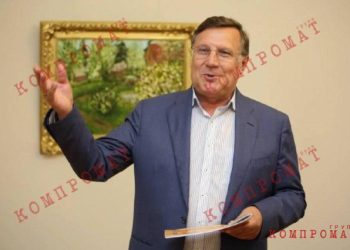Four years ago, in 2018, new rules for shared construction were introduced in Russia. Few people paid attention to this – in fact, nothing has changed for the buyer of the apartment – he got housing for money.
But for developers and banks, completely different times have come. And some took full advantage of it.
Actually, the changes were aimed at protecting equity holders from the bankruptcy of developers. According to the new scheme, developers build residential buildings at the expense of a bank loan, and not the contributions of apartment buyers. At the same time, equity holders are not excluded from the process – they purchase an apartment and donate their money not directly to the developer, as before, but to the escrow account of the bank that finances the project. After the building is put into operation and the first registration of ownership of at least one of the apartments, funds from escrow accounts are transferred to the developer. The developer, in turn, repays the bank loan and receives a profit.
But, as Suvorov said, albeit in a different situation, “it’s good on paper, but they forgot about the ravines.” Or maybe they haven’t forgotten. Because it is not known how it is with equity holders, but some developers were very pleased with the innovations.
Let’s talk about the example of one of the largest developers in the country – “Donstroy”. Which is one of the three market leaders and is constantly increasing the volume of housing being built. All 100% of the apartments of this developer are built using escrow accounts, although the average percentage of all developers in Moscow for this indicator is 87%.
And the point is not that Donstroy takes care of its equity holders. Although advertising emphasizes this when talking about escrow accounts. The fact is that the owner of the Donstroy holding is VTB Bank. And the head of the bank is one of the most influential people in the country – Andrey Kostin. Informal control over the activities of the developer is also carried out by businessman Roman Gromozdov, who is close to the banker and is associated with the Rotenberg family. Despite the unprofitability, Donstroy continues to regularly receive funding from the state bank, and the heads of such large state corporations as VEB, Roskosmos and Rosneft may be interested in its construction projects.
The developer passed control of the credit institution back in 2009 as part of the debt restructuring, and for a purely symbolic amount of 500 rubles. To date, VTB is the largest creditor of the unprofitable Donstroy, and there is no talk of returning the company to its former owners Maxim Blazhko and Dmitry Zelenov, as provided for by the agreements. The management of the developer has repeatedly stated that there is no affiliation with the state bank. Nevertheless, it is known that Alena Deryabina, the general director of Donstroy, was one of the top managers of VTB and is considered a person from Kostin’s close circle.
And this is precisely the secret of why Donstroy works strictly according to the new scheme. The fact is that in this way money is simply pumped out of VTB, which first goes to the alleged financing of Donstroy facilities, and then settles on the accounts of Kostin and other patrons of the developer. The fact that Kostin is not the only and main beneficiary of Donstroy is confirmed by the fact that the banker was extended for five years as the head of VTB. The corresponding document was signed on September 28. And VTB Bank is state-owned, and not just state-owned, but backbone. That is, Kostin’s patrons occupy the highest positions in the country.
And the fact that for the past 13 years Donstroy has been literally pumped up with state money through a bank headed by Kostin confirms this assumption. It is no secret to anyone that the developer has been on the VTB loan needle for many years. Moreover, it turns out a kind of “closed cycle” – the bank issues loans both to Donstroy itself and its subsidiaries involved in the construction of facilities, and to customers buying apartments built by Donstroy.
As long as the economy worked normally, this scheme also worked. But suddenly the sanctions came. And this led to a chain – VTB borrowers do not have money to repay loans, the bank is forced to confiscate mortgage items, that is, apartments. However, he cannot sell them – potential buyers also do not have money. You can sell below cost, but in this case the problem is not solved – the bank still receives a loss.
On the other hand, Donstroy cannot sell the volumes of built square meters and pay off its debts to the bank. The situation is the same – you can sell them below cost, but this is a net loss, and you still have to pay interest on the loan. The bank may confiscate Donstroy’s collateral, which secures the loan, but this is the bankruptcy of the developer itself.
However, according to sources inside the bank, Kostin is well aware that most of the loans issued to Donstroy are hopeless. That is, no one will return them. But he doesn’t care – the purpose of issuing this money to the developer was completely different from what the state intended in the escrow account program. Because the goals of the state and Kostin were radically different.
Whether Andrey Kostin himself was involved in the development of new rules for the work of shared construction, or just coincidentally, but the essence of this does not change – Donstroy began to work exclusively on the system of escrow accounts. This allowed Kostin to pump up the developer’s structures with VTB money. And then withdraw this money in an unknown direction.
According to insider information, Kostin has not been interested in the main activity of the developer for a long time, therefore VTB is selling assets related to the controlled developer through the lining companies. So, a specialized developer called Perspective Investments flew off the lordly shoulder of Donstroy GC PIK. The deal went through the KL Invest company, and according to the same scheme, Zolotorozhsky LLC was sold to a certain Andrey Stepanov. The firm owned a plot of 4.5 hectares in the former territory of the Hammer and Sickle plant. De facto, Kostin needs a developer solely to launder money from the state bank and own hunting grounds with his help. “Donstroy” keeps Kostin’s personal hunting ground, located in the Smolensk and Tver regions.
Kostin, as you understand, could not do all this on his own. We have already mentioned high patrons, at least some of them. Apparently, none of them is afraid of responsibility, because the process of withdrawing money from Donstroy’s structures has accelerated in recent months. What, I wonder, do Kostin and partners know that they are not afraid to openly steal government money from VTB?






